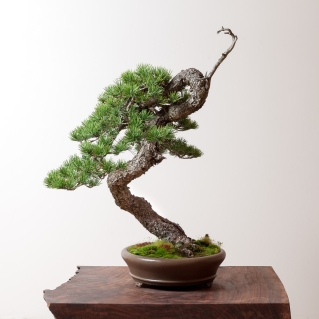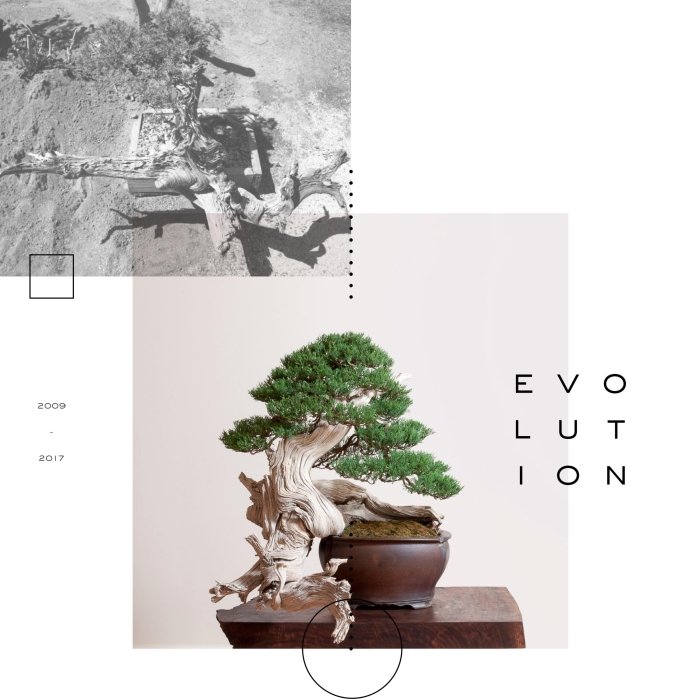from firewood to world-class bonsai
I collected this tree in college on the eastern side of the Sierra Nevadas in California. I found it in a stunted forest of Lodgepole pine, growing in volcanic pumice. It was crushed and contorted by years of heavy snow fall, but its shape was unique. Clearly this pine had been subjected to far worse conditions than those around it and its angular movement made it a very special piece of material.
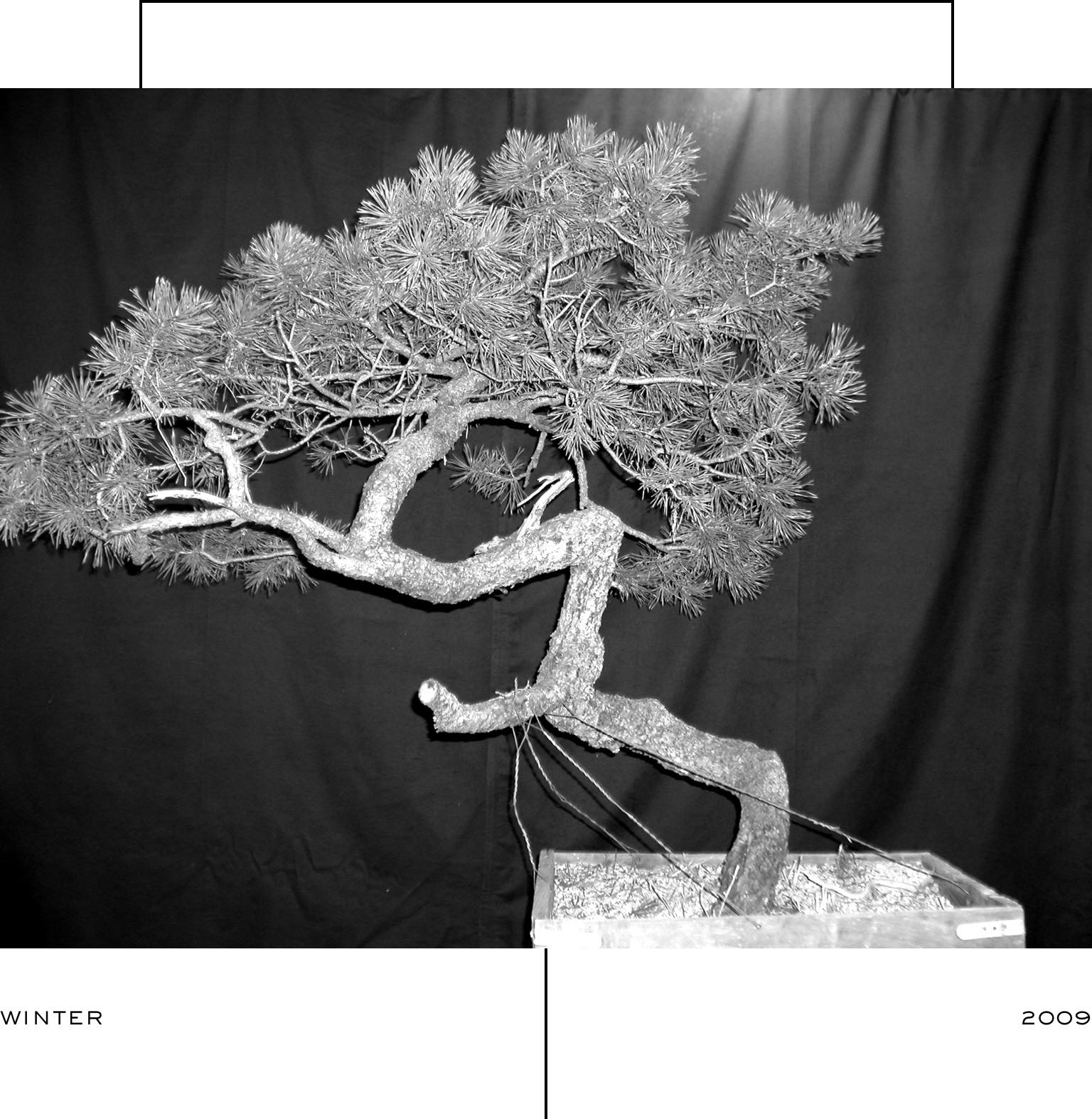
"Hey man, you can just burn that tree."
On one of my trips home from Japan I went to see the trees I’d left in the care of a friend. Of the 40 trees they were watching for me only 10 were still alive; this lodgepole was one of them. I packed the trees up right then and there and drove them up to Oregon to be left with Randy Knight.
As I was leaving back to Japan, I remember looking at this Lodgepole pine and telling Randy, “hey man, you can just burn that tree if it’s too much trouble.” Randy nodded. I was at a point in the development of my skills where I still didn’t fully understand how to value the potential of material.
So I went back to Japan and immediately began thinking about this tree, regretting my choice. I left it to chance and resumed my role as an apprentice.
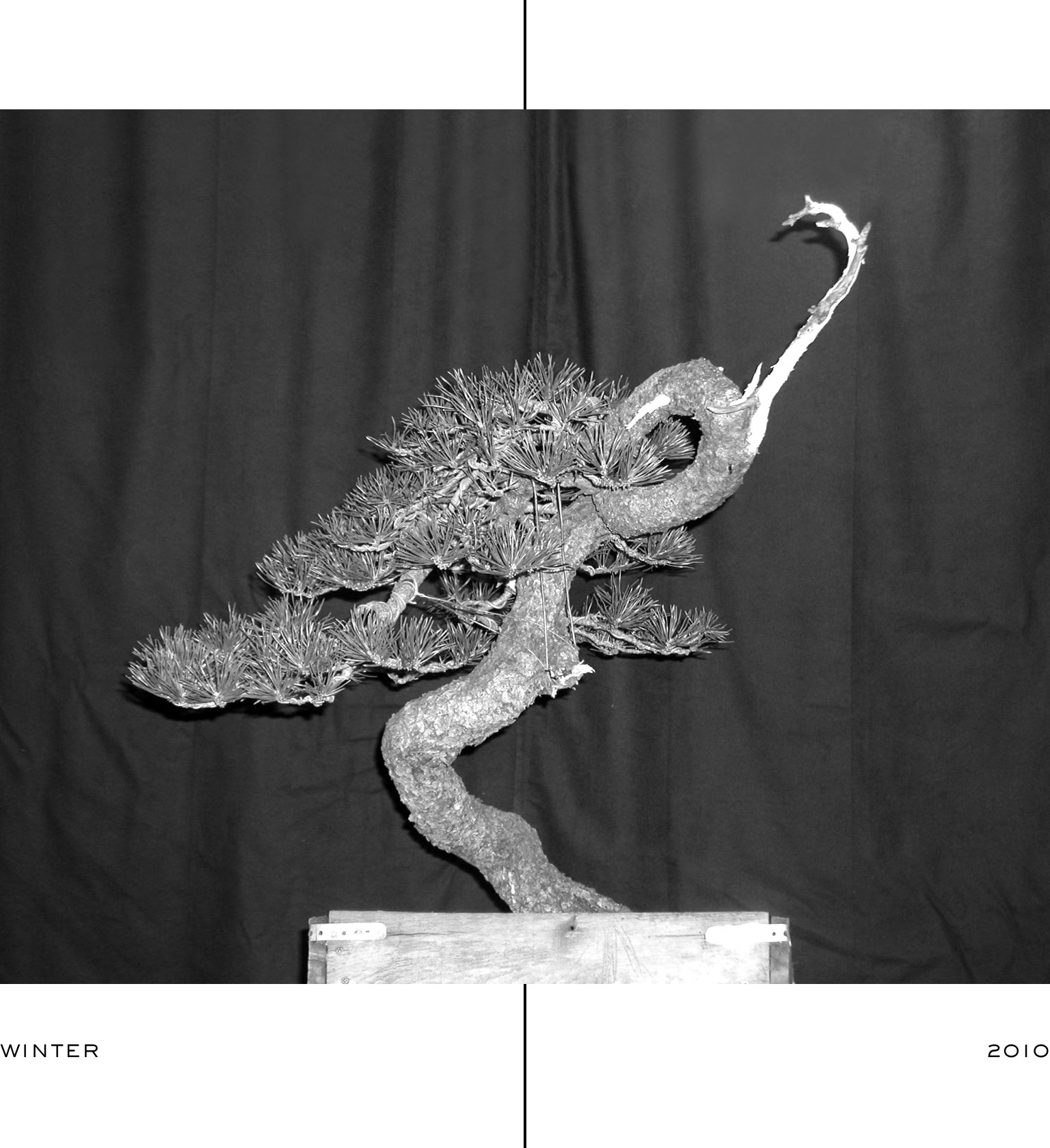
"I was surprised to find out that Randy had saved it; 'It was too good to burn,' he said."
When I came back to Oregon several months later, I was surprised to find out that Randy had saved it; “It was too good to burn,” he said. I went to bed early that night, woke up the next day, and went into the workshop intent on doing this tree justice. I’d thought about it so much the tree literally styled itself and transformed before my eyes.

“The Lodgepole needed compression, compression, and a little more compression"
Every tree has a series of actions that have to be taken to give it shape. This Lodgepole needed compression, compression, and a little more compression in a series of big bends to finalize its contorted shape. I sought to capture the most beautiful line possible and utilized the jin to accentuate that line. Even 2 years after the initial styling the tree had yet to take on its new shape and so it was compressed again.

"This tree represents a huge point of synthesis."
I credit this tree every time I take a seemingly mundane piece of material and watch it become something great. You learn something special from every tree, but this Lodgepole represents a huge point of synthesis for me as a professional. If given the appropriate amount of time and attention a professional should be able to make any piece of material great.
This tree is a cornerstone piece for Mirai—it has been at the forefront of my career. I showcase it at the Pacific Bonsai Museum—at my very first exhibition—and then again at Spectrum.
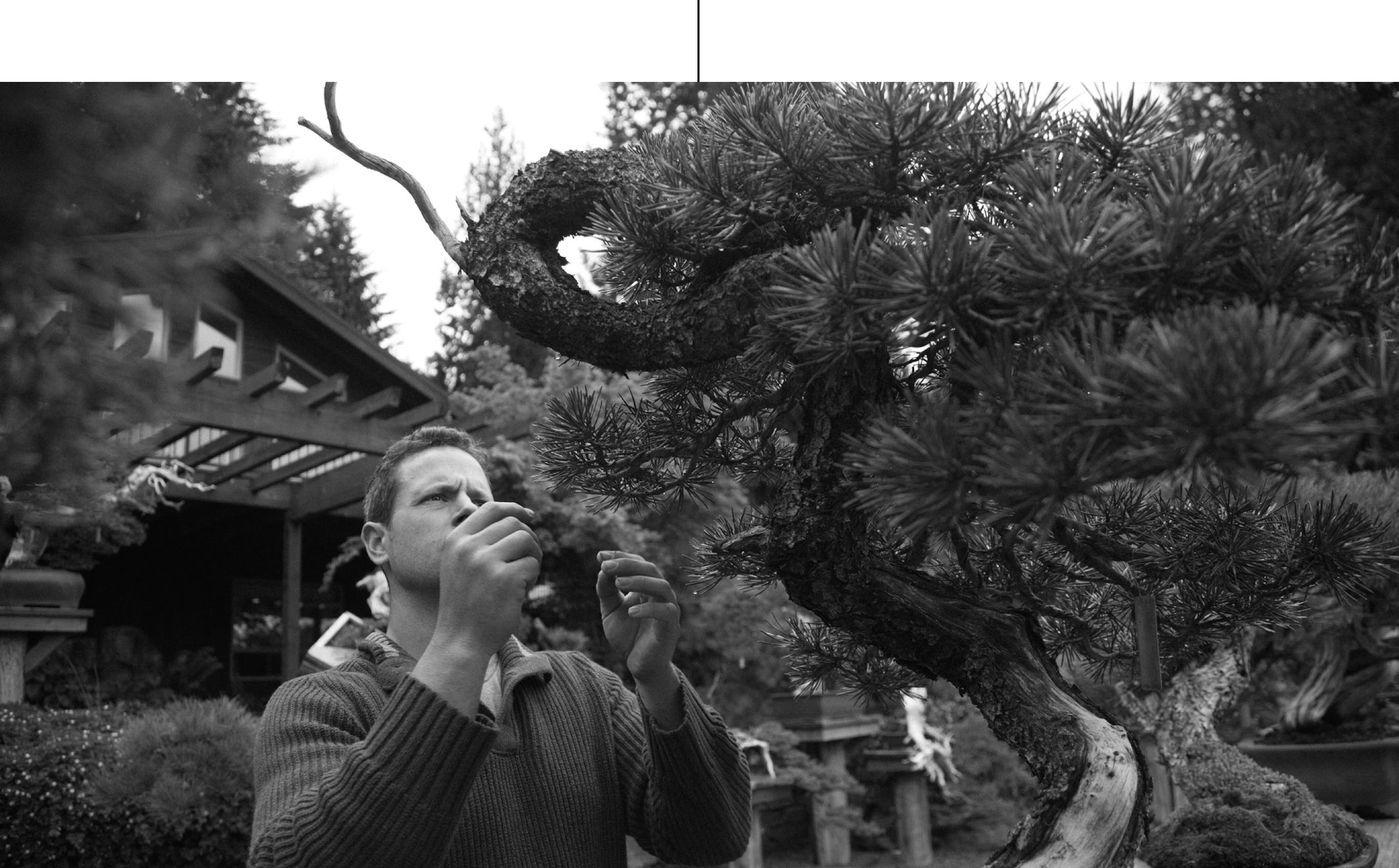


Lodgepole Pine #1 is one of three trees at Mirai that will never be for sale—there’s no price. I see what this tree has become and recognize I still have so much more to learn from it—this was supposed to be firewood and now it is one of my most beloved trees. Through the journey of creation it altered the way I look at material and how I approach the process of design.
Some professionals pride themselves on material selection, but as Mr. Kimura used to teach me, “there is no bad piece of material, there are simply less talented artists.” It took this Lodgepole pine to convey his lesson in a way I could understand. Several years later some of the best trees at Mirai have been created from material no one else wanted or saw potential in. Every time I look at them I smile. We owe it all to the Lodgepole pine.

